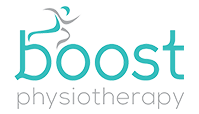
5 Popular Supraspinatus Exercises to Improve Shoulder Functionality
Supraspinatus exercises are a great way to improve shoulder functionality and mitigate shoulder issues. Any injury can significantly hinder a person’s quality of life, especially when dealing with significant shoulder injuries. Tasks such as cooking, gardening, playing sports, lifting, or any day-to-day activity can be significantly affected if a shoulder isn’t working correctly.
Thankfully, there are plenty of exercises, tips, and steps a person can take to improve their shoulder. Whether they’re overcoming an injury or have an ageing shoulder, all of it can improve. Below will highlight the rotator cuff and its importance, what causes shoulder injuries, the danger of these injuries, rehabbing advice, and the exercises we recommend.
Rotator Cuff Functionality
The rotator cuff comprises four muscles: the supraspinatus, infraspinatus, subscapularis, and teres minor. All of these muscles connect your scapula to your humerus.
These muscles can be associated with a rotator sleeve tear; however, the supraspinatus is the most common injury. The supraspinatus runs adjacent to the highest point of your scapula and connects to the top of your humerus.
As the name suggests, the rotator cuff works to turn your arm. The muscles also control the humeral head during shoulder flexion. It assists with keeping your humerus focused in the joint, guaranteeing smooth movement and preventing shoulder impingement.
What Causes Shoulder Injuries?
Shoulder injuries can be evident and abrupt. Abrupt cases typically include injury, such as falling on your arm when it was out or a failed pressing while weight lifting. Still, injuries aren’t the only reason for a shoulder issue. There are instances where a shoulder issue can seemingly pop up out of nowhere.
Most cases are from a more continuous and unobtrusive injury. These tears happen over time because of a ligament being worn out by monotonous movements or poor posture. That’s why people begin to experience shoulder issues as they get older.
The Danger of Shoulder Injuries
Shoulder injuries or pain can be a significant hindrance to a person’s quality of life. Whether going for a walk, lifting something, or just trying to play a backyard sport, all of that can be negatively influenced by shoulder issues. The worst part is many of these issues worsen with age.
For example, a younger person might deal with minor shoulder pain without it heavily dictating their life. Then, once they hit a certain age, that issue can be much more severe all of a sudden. That’s why people need to address any particular physical ailment as soon as they can.
Steps for Rehabbing Shoulder Injuries
If your shoulder’s been feeling frail or excruciating when you reach up, you may want to consider rehabbing it with physiotherapy. Likewise, it can be beneficial if you know you’re in danger of a supraspinatus injury due to repeated overhead movements. Either way, physiotherapy typically begins the same with a diagnosis and rehab plan.
Get Diagnosis
The first step of rehabbing a shoulder injury is to get a diagnosis. Around 80 percent of people with rotator cuff tears don’t require surgery. Still, it’s ideal for getting an official diagnosis from a doctor, so you know what to do with your shoulder.
Before meeting your doctor, you can also try lifting your arm and moving your shoulder to see where the pain comes from. If there is any pain and it doesn’t get better within a couple of days, a more severe issue like a tear is happening.
Develop Rehab Plan With Professional
After you get an official diagnosis, your doctor will relay what they feel the best course of action is. Your doctor will most likely tell you to take it easy for a certain amount of time to see how your shoulder is after some rest.
If the injury is severe, your doctor may recommend surgery and a timeline for physiotherapy. Even if you don’t require surgery, your doctor will still discuss the importance of supraspinatus exercises to improve shoulder functionality.
5 Supraspinatus Exercises to Improve Shoulder Functionality
Below are a few essential exercises to improve shoulder functionality that you can expect from a physiotherapist. These exercises are great because they’re not overly complicated, meaning you can do them in the comfort of your home.
The Lasso
Begin by wrapping a light ball in a towel. Tie a string around it and stand with your shoulders back. Keep your right elbow by your body and swing the rope in a clockwise direction. Swing the ball for 30 seconds before switching to the left arm for 30 seconds in a counter-clockwise direction.
4 Point or Front Support
Get into a quadruped position and press into your hands and toes. Lift your knees off the ground, hover, and hold for 30 to 45 seconds. Try completing three sets, but don’t be afraid to take shorter sets if it’s too complicated.
Side-Lying External Rotation
Lie down on your left side, bend your bottom leg, extend your top leg, and use your left hand to support your head. Find a doable weight, grab it with your right hand and lift it. Keep your elbow and wrist straight. Lower it down and try completing 12 to 15 reps.
Front Support on Medicine Ball
Medicine balls are commonly used in physiotherapy. Grab a medicine ball, place it under your hands, and go into a push-up position. Keep your toes on the ground, your hands on the ball, and hold the position for 30 seconds, and let go. Try completing three reps and take a break.
Sword Motion With Cable
If you have a resistance band or cable from a weight machine, set it up as low as possible. Stand with your legs shoulder-width apart and grasp the cable handle with the hand farthest from the machine. Lift the cable in a sword motion, and breathe throughout the process. Make sure your shoulder is down, and the movement is fluid. Complete ten reps, then switch sides.
Want to Learn More About Supraspinatus Exercises?
Hopefully, this quick look at supraspinatus exercises gave you more than information to improve shoulder functionality. If you have any questions about the matter or physio in general, visit us at Boost Physiotherapy! At Boost Physiotherapy, we’ll get you feeling better with our team of highly educated physiotherapists in physical function and mobility. Make your appointment today!
BY: boostptepadmin
Physio
COMMENTS: No Comments
